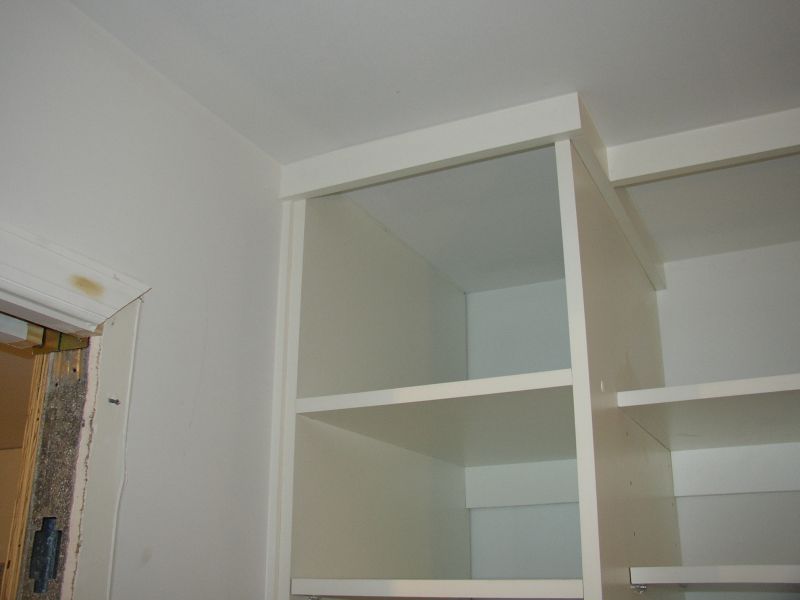Hiding Pocket Screw Holes
Fill the holes, or apply a panel? May 4, 2005
Question
I use pocket hole joints for cabinet case construction. Most joints are hidden, of course. I biscuit face frames to the case. What's the best way to hide holes in the bottom of the upper cases (side meets bottom)? I have been plugging the holes. I would like a faster method.
Forum Responses
(Cabinet and Millwork Installation Forum)
From contributor R:
If the uppers are installed tight together, why not save yourself a lot of work and shoot the screws right through the sides into the top and bottom? Save the pocket work for the finished ends only.
From contributor D:
Why don't you throw on a 1/4" skin under all the upper cabs after installation? Surely the extra material costs less than your time to plug holes, and it looks cleaner, too.
From contributor K:
I agree - much easier to finish it with a panel. Also looks much better, and brings the finished look to another level, especially if you have under-cab lighting.
From contributor P:
On my face frame cases, I dado the deck into the sides at 1 1/4" from the bottom edge. I use a 2" FF and this puts the top edge of the deck flush with the edge of the face frame inside the box. I also get a 1 1/4" deep recess on the underside of the box for lighting and wires. I can cover this with a skin if desired by gluing in small corner blocks and dropping the skin inside. Bottom is clean with no raw edge and all fasteners are covered. No waist molding required, either, for those jobs that don't want it.
I've been trying to figure out how to do something similar with frameless, but so far have come up only with a similar case construction idea. By putting the bottom in a dado set 3/4" from the bottom edge, I can add a small strip along the face under the deck to bring everything flush. This makes a 3/4" deep recess on the bottom for wires, etc. Skin the underside as for FF cases. Only problem is the door. I have to extend the door length 3/4" to keep the same visual overlay appearance all the way around. This puts a large overlay all along the bottom and, although it doesn't interfere with anything mechanically, can be startling when opening the door, since the bottom shelf looks extra thick at that point.
From the original questioner:
Thanks for the response. I will use a combo of the methods. I like the 1 1/4 recess under the deck. The norm for mine is 3/4 with 1 1/2 bottom rail with add-on skirt if needed for lights. I used the side screw method before, but had trouble holding deck/shelf in place - this was without dados. I then went to shallow dados with a few pocket screws. Since buying a couple of Kregs right angle clamps, I find no need for the dados. They hold the material in place (tried jet clamps - pure junk).
